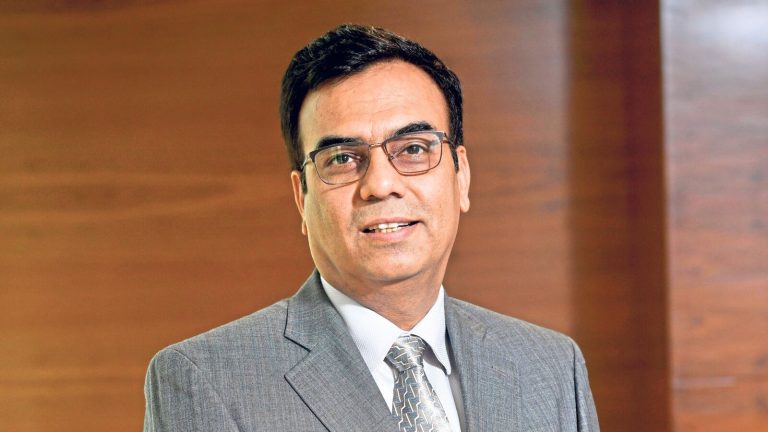“We are seeing a minor risk-on environment now,” said Tandon, whose firm manages close to ₹90,000 crore in investor assets. Quant Small Cap Fund is the largest scheme for the fund house with assets of around ₹26,000 crore.
His own equity portfolio has 60% exposure to large-caps, 15% to mid-caps and 25% to small-caps, Tandon said in an interaction with Mint on ‘Guru Portfolio’, a series whereleaders from the financial services industry share how they manage their money.
Asset mix
Tandon, who is bullish on small-caps for the long term, has allocated more towards large-caps over the past year. He moved out of mid- and small-caps around July last year as Quant’s data-driven investment model signalled a risk-off period.
His allocation last year was as follows: 27% to small-caps, 23% to mid-caps and 50% to large-caps. However, over the past three months, Tandon has been seeing “a minor risk-on environment” and more opportunities in the small-cap segment as stock prices have corrected sharply, but he still remains more cautious on mid-caps.
All of Tandon’s personal investments are managed through Quant Mutual Fund’s schemes, and portfolio changes influence his own allocation.
About 75% of his portfolio is allocated to equities, 15% is in real estate and the remaining 10% is in liquid funds for any contingencies. He doesn’t see real estate holdings as an investment as these properties are family-owned for residential and office use.
While Tandon’s equity allocation was 60% last year, but his incremental stock investments went up from 50% to 75% over the past five years amid the stock market rally.
While his portfolio has delivered negative returns of 2-3% over the past year, the five-year average annualized returns stand at 35%.
Investment framework
Unlike the traditional buy-and-hold style, Tandon says his funds follow “short-, medium-, long- and even investments with decadal view”.
View Full Image
He cites the example of Japan. After 1989, the Japanese markets didn’t touch new highs till 2024. “So, for the better part of three decades, if the investor had just stayed long-term, he or she would have got index-like returns,” Tandon said. “Investors always chase alpha (outperformance vs alpha) regardless of the market cycle, which is possible if certain investments are looking to capture short-term opportunities.”
Quant’s data analytics model has been built over the years and follows the valuation, liquidity, risk appetite and timing analytics or the VLRT framework. For example, when both risk appetite and liquidity are at elevated levels in the markets, the investments can be more aggressive.
Tandon’s interest in quantifying market dynamics stems from his early experience in thebadla market, which for several years was India’s indigenous derivatives market before the futures & options (F&O) segment was introduced in early 2000s.
“It was possible to reverse calculate thebadla rate to decode the mood of the market. That’s the reason I always talk about market-implied analytics,” Tandon said. “The genesis of market-implied analytics actually comes from thebadla market.”
Learnings
Tandon prefers equities over real estate. “There used to be that mindset that, as soon as you get your first savings, you should start building a house. In those early days, I took a loan to purchase my first house. Then, as a family, we bought a couple of more houses,” he said. “However, if I had used those funds to invest in equities, the wealth creation would have been much larger.”
Contingency covers
Tandon doesn’t keep a contingency fund separately as he maintains 10% of his allocation in liquid funds.
He doesn’t believe that one needs to be 100% invested in markets all the time. “In any case, I have a very large holding in equities. The liquid fund allocation gives me a psychological comfort,” Tandon said. On life insurance and health cover, he says he has been adequately covered by his company.
Retirement corpus
Tandon doesn’t plan to retire anytime soon. “I don’t like to think of retirement as it has negative connotations for me,” he said. “I believe in working till the last day of life. When you think like that, your involvement will be on the higher side, your reflexes will be on the higher side. The mental agility remains intact.”
He has not planned any separate retirement corpus. All his investments can be easily liquidated as and when he requires them.
Tariff uncertainty
Markets are about cycles, according to Tandon. “Nobody can identify the exact trough or crest of the market. Something has changed for India. Our perception analytics says that India’s perception has changed, which means any valuation multiple can remain elevated for a longer period of time,” he said. “Recently, too, we saw this play out. Since 2022-2023, people have been saying markets are expensive, but markets have still rallied from those levels till as late as September 2024.”
“We have to live with the reality that India is buy-on-dip. Structurally, something has changed. So, India’s long-term growth story remains intact, despite the tariff noise that is playing out. In absolute and relative terms, India can be a big beneficiary. India is the only country in Asia that can come close to offering the scale of China, if the US wants to reduce its reliance on China,” he said.
Other interests
His passion for analytics drives him, keeping his energy levels high, said Tandon. “If you like something, you always find the energy to pursue it.” Apart from that, he likes to read. He also listens to podcasts if he finds time or whenever he takes his walks. “I also like to listen to music to unwind.”



